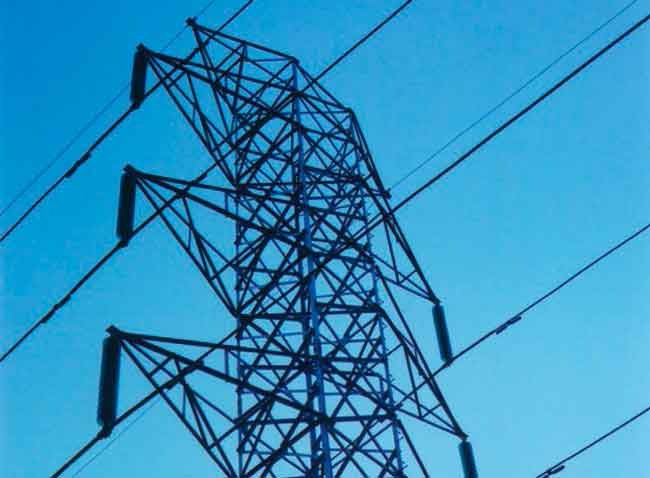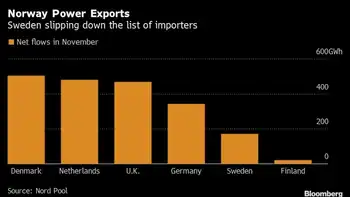Whose bright idea were CFL bulbs?
By Langley Times
Arc Flash Training CSA Z462 - Electrical Safety Essentials
Our customized live online or in‑person group training can be delivered to your staff at your location.

- Live Online
- 6 hours Instructor-led
- Group Training Available
Our headaches were identical, both feeling pain behind our eyes and in our temples.
I don’t usually suffer from headaches and I didn’t end up with a cold of flu to explain the head pain. The only answer we both came up with was the Compact Fluorescent Lights (CFLs) shining from our ensuite must have irritated us. We had felt a feeling of being ‘unwell’ before, while reading at the kitchen table where we had also switched to CFL lighting.
The ‘green’ marketing machine has promoted CFLs like no other energy saving product out there. We bought in and switched most of our lighting in our household under the idea we were helping the environment.
Our headaches and our realization came months before new tests revealed what dirty electricity these bulbs might be giving off. The mercury-based bulbs, that have been pushed on us by government advertising and rebates by BC Hydro as the saviour to Earth as we know it, give off UV radiation.
They may emit up to 200 times the dirty energy, or radiation, of the incandescent bulbs most of us have got rid of, say some scientists.
The rub is the Canadian government wants to eliminate incandescent bulbs by 2012, leaving our workplaces, malls, offices, grocery stores and homes full of CFL lighting. At Trinity Western University, for example, they have changed out almost all of the incandescent light bulbs in the dorms to energy-saving CFLs.
Energy-saving light bulbs are the most common way to go green at home, according to Statistics CanadaÂ’s latest Households and the Environment survey, with 84 per cent of households in 2007 having at least one CFL bulb.
Even David Suzuki promotes CFLs, with a picture of one right on the front page of his website.
I e-mailed my concerns about the harmful radiation coming from CFLs. The Suzuki Foundation replied that it supports the bulbs because they are much more energy efficient, thereby better for Mother Earth.
“New studies have shown that CFLs can be problematic for people with certain skin conditions. This can be easily avoided by not using the bulbs where one would be spending more than an hour a day within 30 cm of the bulb or by using an encapsulated bulb,” writes Ryan Kadowaki, of the David Suzuki Foundation.
“Health Canada is currently testing CFLs to ensure they are not posing any health risks. There are currently no peer-reviewed scientific studies linking CFLs with the medical problems mentioned on the show.”
The show he is referring to is Global TVÂ’s 16 by 9, which had several scientists run tests, showing the bulbs emitting 200 times the dirty electricity compared to incandescents.
Then a memo from BC Hydro to the B.C. Utilities Commission stated that the switch over to CFL bulbs is causing people to turn up the heat in fall and winter.
In the report and speaking to CBC, BC Hydro said CFLs do increase greenhouse gas emmissions because of the loss of heat coming from incandescent light bulbs throughout peopleÂ’s homes.
Then on March 5, BC Hydro posted a ‘fact and myth’ page promoting the use of CFLs.
CFLs do add greenhouse gas emissions because of the loss of heat from incandescent bulbs, the website says. But incandescent light bulbs are so inefficient at producing light, that 95 per cent of the electricity they use goes towards producing heat, said BC Hydro.
Even after this report about loss of heating, the David Suzuki Foundation disputes the claim that incandescents heat homes, saying the heat coming from these bulbs is minimal, given most of our lighting is in the ceiling and heat rises.
The Suzuki Foundation admits that CFLs arenÂ’t the ideal bulb to have in the house, but until LED technology puts out household bulbs and lighting, CFLs are the best interim solution to help the environment, said Nicolas Harp, climate and energy policy director for the David Suzuki Foundation.
When I was doing a story on the hype around banning plastic bags six months ago, I phoned the Recycling Council of B.C. to ask where bags get recycled (turns out at a Burnaby plant). I also wanted to know how many end up in the landfill. The spokesperson said it was CFL bulbs ending up in the landfill that people should be more concerned about — not plastic bags.
The reason?
The amount of mercury ending up in the landfill from CFL bulbs. Oh, and by the way, if one of these CFLs happen to break inside your home, Health Canada advises you to ventilate the room and not inhale the mercury and then wear rubber gloves and not touch the bulbs.
Health Canada also warns that people with lupus, light sensitivity and people prone to headaches may find ill effects from the UV radiation coming from CFLs.
So to recap, according to tests done by some scientists, CFLs emit 200 times the radiation as the old bulbs, cause some people headaches, others with skin conditions, red rashes and possible aches and pains depending on sensitivity levels.
They put more mercury into the environment than any other type of bulb — but the government wants every mall, office and home to be full of CFLs by 2012?
Come to your own conclusions and make your own decisions.
As for me, IÂ’ve switched back to incandescents in hopes LED lights will come out soon.











